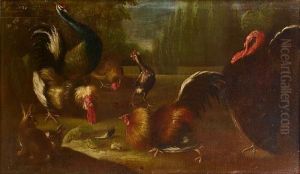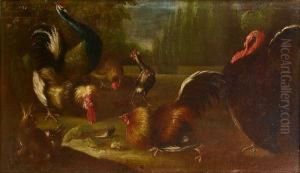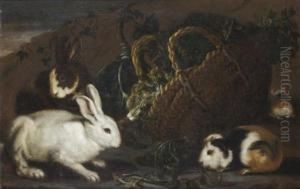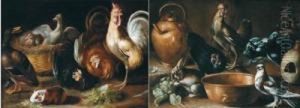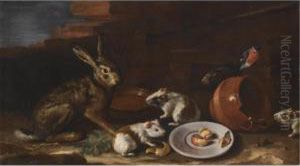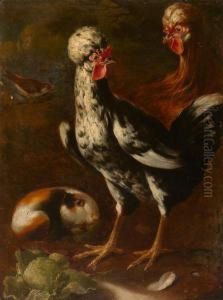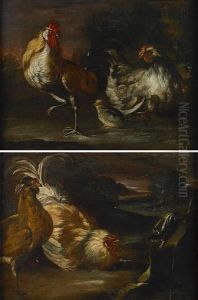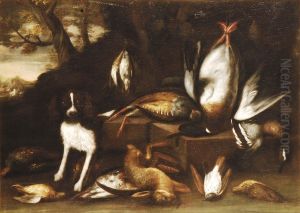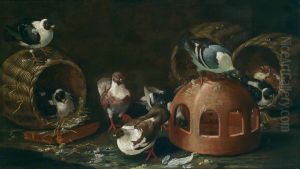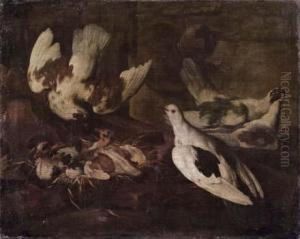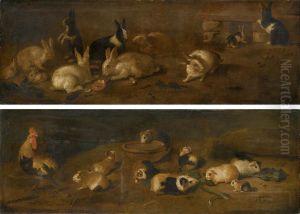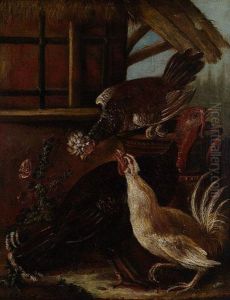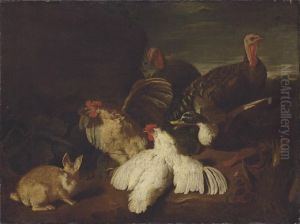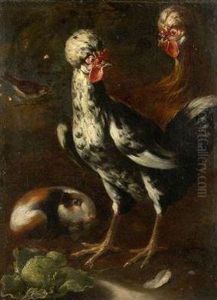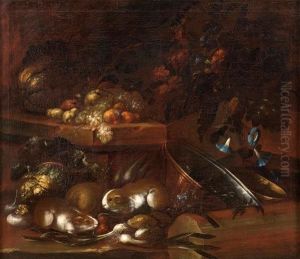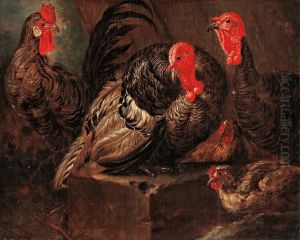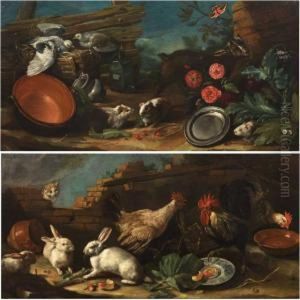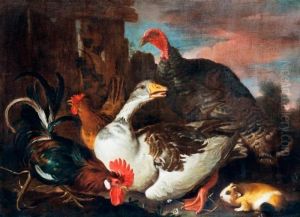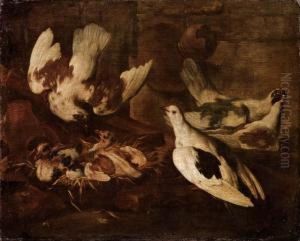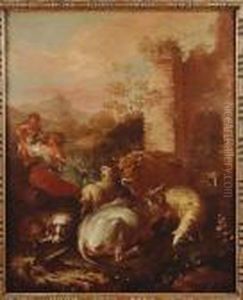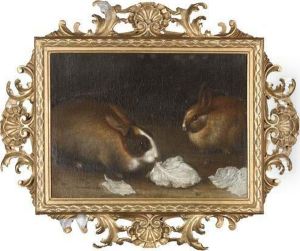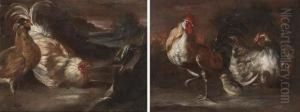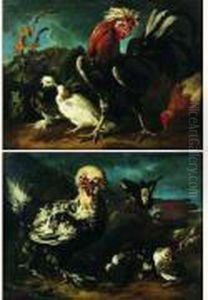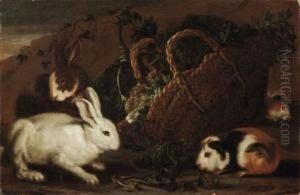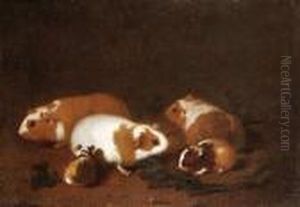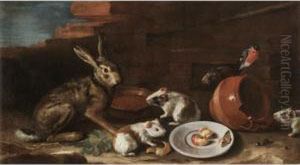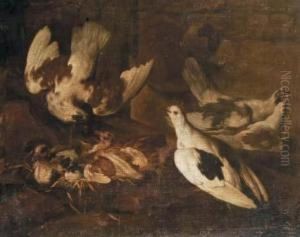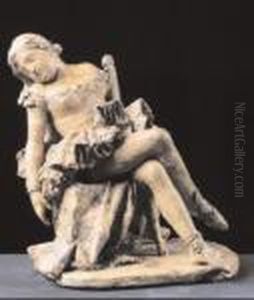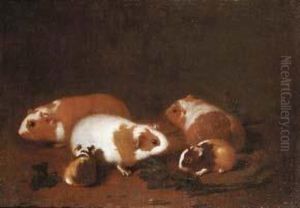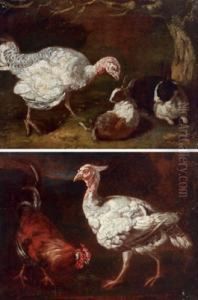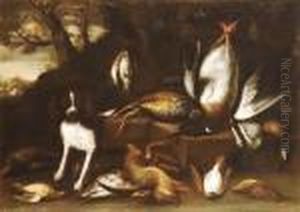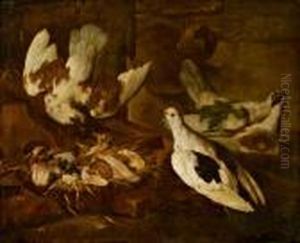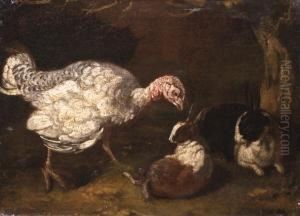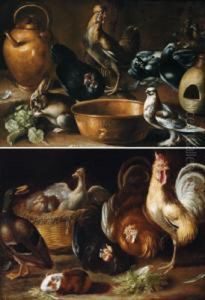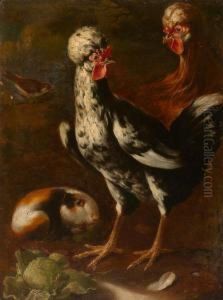Giovanni Agostino Cassana Paintings
Giovanni Agostino Cassana was an Italian painter born in 1658 in Genoa. He was part of a family of artists; his father, Giovanni Francesco Cassana, was also a painter, and his brothers Niccolò and Giovanni Battista were both involved in the arts. Giovanni Agostino received his early training from his father and was later influenced by the Genoese school of painting, which was characterized by a rich use of color and a certain robustness in figural representation.
Cassana's work was predominantly in the Baroque style, and he was known for his skill in painting animals and still-life, although he also painted historical and mythological subjects. His animal paintings often included a human figure or figures, combining portraiture with the vivacity of the animals, which he rendered with particular attention to detail and realism.
He spent a significant portion of his career in Venice, where he was influenced by the Venetian masters and where his work was well received. Cassana's paintings were appreciated for their lively compositions and the sense of immediacy he brought to his subjects. His style evolved over time, showing an increased interest in the interplay of light and shadow, which added a dramatic effect to his later works.
Giovanni Agostino Cassana's career was successful, and his works were sought after by patrons across Italy. Some of his notable works are still preserved in various Italian churches and museums. He died in 1720 in Venice, leaving behind a legacy that is remembered for its vibrant depiction of life and nature during the Italian Baroque period.
